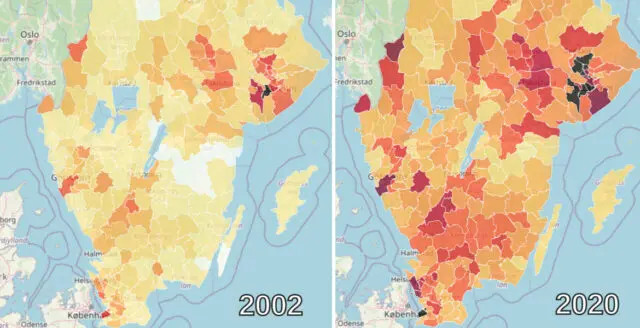An interactive map produced by Alternative for Germany MEP Bernhard Zimniok shows in an educational way the demographic development of Sweden and Europe as a whole between 2002 and 2020. It shows that people with a foreign background are already a majority in several municipalities and will become a majority in many more.
The figures on which the map is based have been obtained from official national registers, and for the Swedish data, figures from Statistics Sweden have been used.
It can be seen, for example, that in 2002 there were only a small number of municipalities where more than 30% of the inhabitants were of immigrant background – and that Botkyrka and Haparanda were the only two municipalities where non-Swedes were in the majority.
In 2020, the demographic make-up has changed significantly and people with a foreign background are also in the majority in Burlöv, Malmö, Södertälje, Huddinge, Solna, Sundbyberg, Järfälla, Upplands-Bro, Upplands Väsby, Sigtuna and Övertorneå, according to the map.
The number of municipalities with more than 30% of inhabitants with a foreign background has also multiplied over the same period, with the fastest growth in the metropolitan regions.

On the map, it is also possible to filter through five categories and choose to either show the demographic change for the whole population, everyone over 65, women 14-44, men 14-44, or children under 14.
According to Statistics Sweden, a person of foreign origin is someone who, regardless of their country of birth, has one or two foreign parents. Third-generation immigrants are thus counted as Swedes according to the statistics, which is why the proportion with an immigrant background is presumably higher than that presented on the map.
In Sweden, the media and the political establishment still refers to the ongoing population exchange as a ‘conspiracy theory’. Even in recent years, there has been a backlash against mainly Sweden Democrat politicians who have drawn attention to the country’s rapidly changing demographics.








